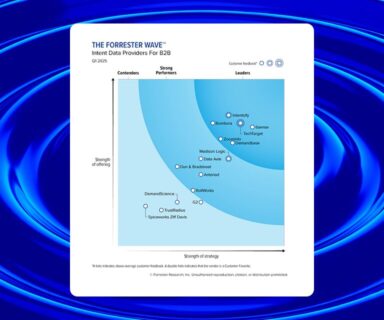 Have you ever been the recipient of a dozen emails and calls from a brand with a message that didn’t pertain to you? Maybe you opened a few emails, but after a while you started to ignore them.
Have you ever been the recipient of a dozen emails and calls from a brand with a message that didn’t pertain to you? Maybe you opened a few emails, but after a while you started to ignore them.
How did those interactions make you feel? Maybe you felt a little annoyed or frustrated. You certainly weren’t left with a positive impression of the brand. For every 1 negative interaction you have with a buyer, it requires 4 positive interactions to offset that experience.
Experiences like this continuously play out across the B2B landscape, creating a cycle where neither the buyer nor the seller wins.
In a recent webinar, our CMO, John Steinert, and Samantha Stone, founder and CMO of The Marketing Advisory Network, discussed how sellers can rethink their approach to create stronger relationships rooted in engagement and more positive interactions with buyers. Based on this discussion, we have developed 5 tips for sellers to immediately follow to get started:
#1 – Understand Buyers’ Behavior
Having your finger on the behavior of your prospects – particularly what content they read and share – enables you to initiate buyer conversations that are both meaningful and helpful. Without this level of insight, you can’t speak to buyers’ specific needs. This can negatively impact buyers’ overall experience.
Data is one of the most valuable resources you can utilize to tune in to your audience. First-party data is often the most readily available and is a great resource to help you understand existing customers and contacts, but offers no insight on their activity outside your systems. It also provides limited visibility into new prospects. Purchase intent data, buyer activity collected by third parties, reveals deep insight on buyers’ activity when they are not with you. Leverage all insight available to you in order to get the most complete picture of prospects and customers before you reach out.
#2 – Rethink How You Use Templates
Templates, particularly for email, have long been a useful tool that allows for efficient, on-message communication. With B2B buyers expecting personalization throughout their journey, templated language can fall short. This has the potential to create a negative experience for your audience.
Understandably not all teams can completely throw out templates. Consider developing guided talking points, which include key messaging but allow for customization based on buyer insight, context and situation.
#3 – Slow Down
When engaging with buyers, it’s instinctive to quickly move from completed activity to the next and to treat outreach as just another required step in your cadence. Each planned interaction should be thoughtfully considered so you understand how it will make the buyer feel. Slowing down doesn’t mean inaction. Take this time to review your approach to targeting, the value of your offer, or the timing of your outreach.
If you’re reviewing the value of your offer, ask yourself “How interesting is this offer to this specific buying group?”, “Does this offer speak to a business challenge?”, “Does it compel buyers to take action?”. You can also use performance data to help answer these questions. Performance data will tell you the engagement levels of prior campaigns, which can include insight to audience response by segment, buyer interest in different offers or the best time to engage audiences.
#4 – Embrace a Multi-Channel Approach
Buyers want to communicate in the channels that they’re most comfortable with and already using. Channels encompass all the vehicles you can use to interact with buyers, including phone, email and social media.
If you’re only using phone and email, consider connecting through social channels like LinkedIn. Buyers are more likely to engage with you and view you in a positive light if you’re respectful of their preferences.
#5 – Be Agile
Agility enables a proactive approach, allowing you to make changes quickly, rather than retroactively responding to poor performance. For example, if you’ve outlined a cadence that you follow strictly, you’re missing opportunities to evaluate performance mid-activity, and modify based on buyer signals and engagement (positive or negative).
By taking on an agile approach, you can make adjustments specific to the interests and objectives of your buyers. This is especially important as buyer requirements evolve and needs change over the course of the purchasing cycle.
By taking the time to review and intentionally develop positive interactions, you’ll develop better relationships built on trust and value with your buyers. This will help put you in a much better position to win the deal when your buyer is ready to make a purchase decision.
To hear from experts on how to strengthen buyer engagement, watch the webinar “The Quest for Stronger Engagement: Creating More Meaningful B2B Marketing and Sales Interactions”.




